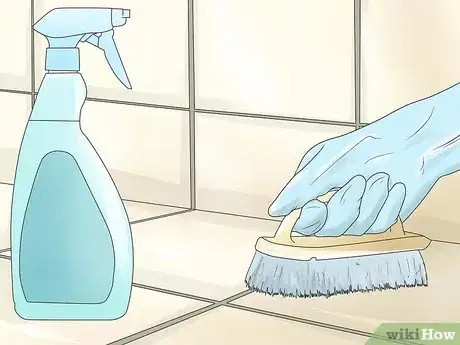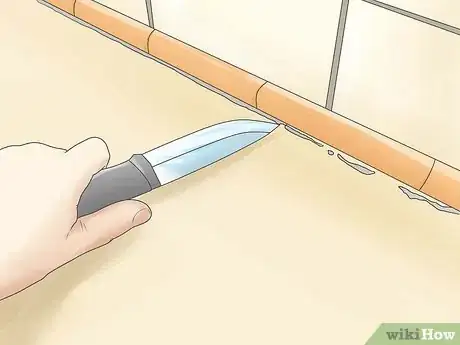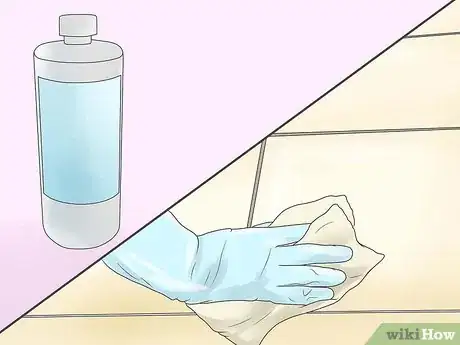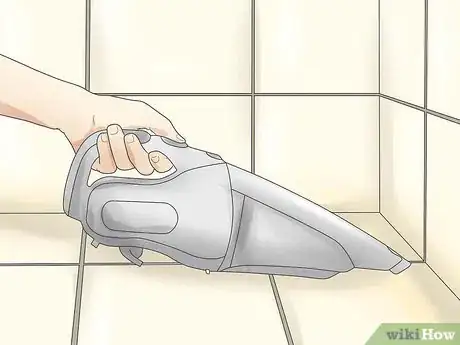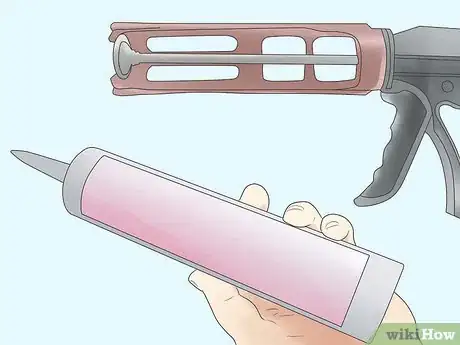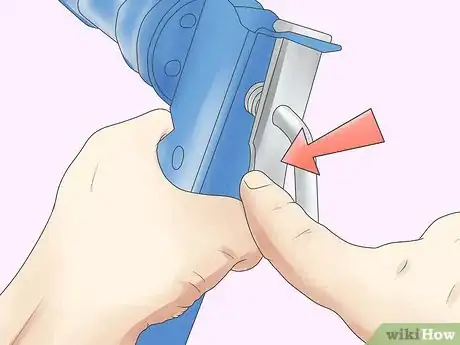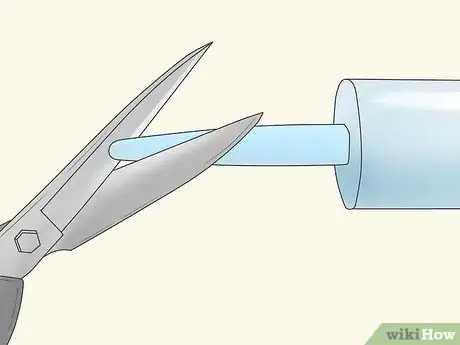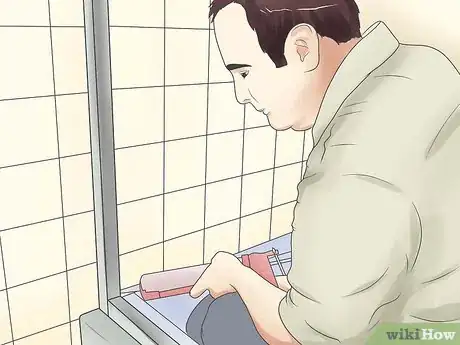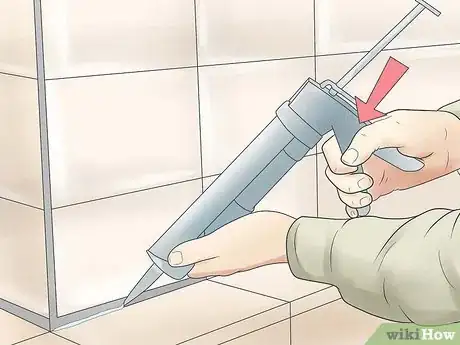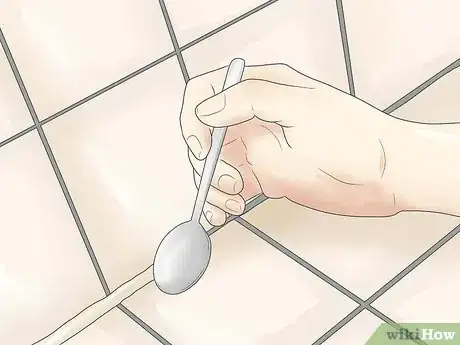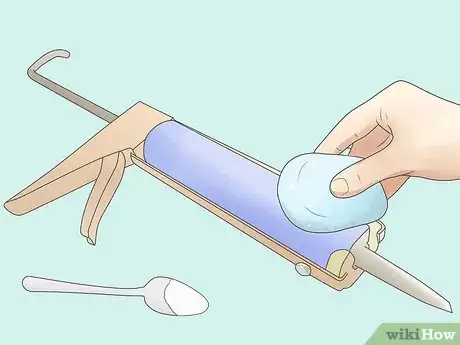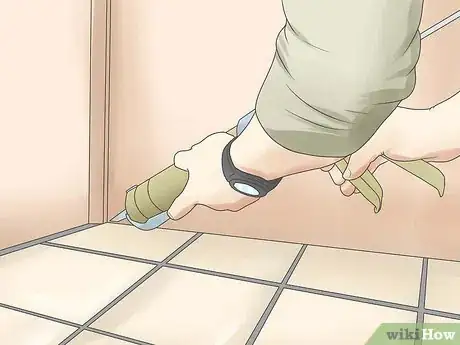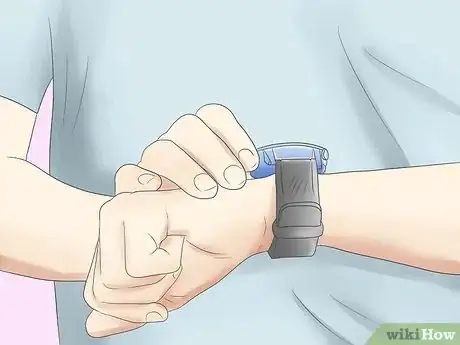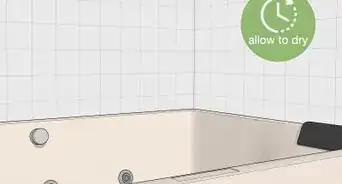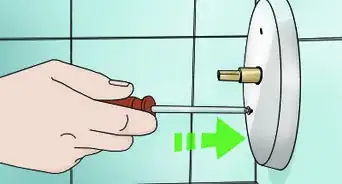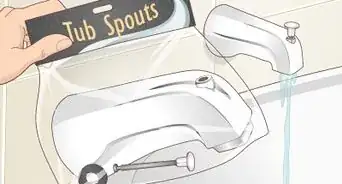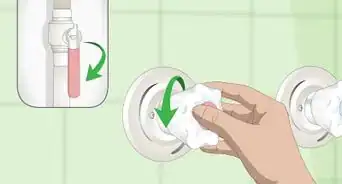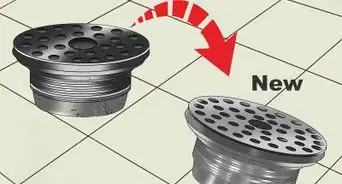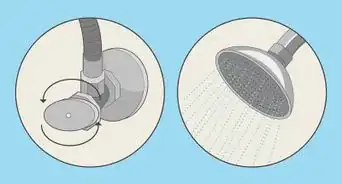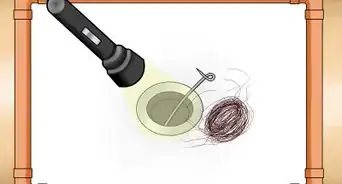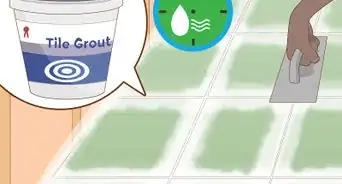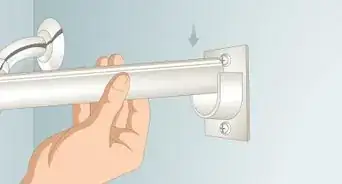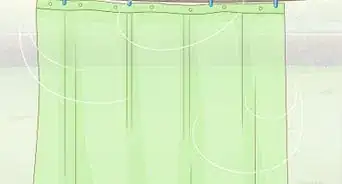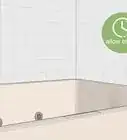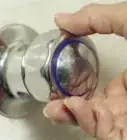This article was co-authored by Eric Shipe. Eric Shipe is a Kitchen and Bath Designer and the Owner of Bath + Kitchen based in Washington DC. Eric and his team specialize in cabinetry, design, and remodels. They serve homeowners, interior designers, architects, and contractors with a refined process, creative ideas, 4K photo-realistic renderings, and 360 Panoramic views. Bath + Kitchen was featured in Best of Houzz 2017-2020. Eric holds a BA in Economics and Business Administration from Ursinus College.
This article has been viewed 176,655 times.
Caulking a shower enclosure is one of the least expensive ways to protect a bathroom from moisture damage. Choose a caulk that is designed both for bathrooms and for mildew resistance. Silicone caulk forms a stronger seal than latex caulk, but latex caulk is easier to clean and remove if the seal fails. Thoroughly cleaning the surface that you are caulking will ensure that your caulk adheres properly and maintains a seal longer. Note that before beginning, you will need to remove all traces of the old caulk.
Steps
Removing the Old Caulk
-
1Scrub the work area using a bathroom cleaner that will remove soap scum.
-
2Remove the old caulk using a utility knife or a razor blade. Be careful not to scratch the surface of the shower enclosure.[1]Advertisement
-
3Wipe off. When all visible caulk is removed, wipe the areas that you are joining with a towel that has been dipped in denatured alcohol. The alcohol will remove any residual soap scum and will loosen any remaining caulk. You want to make sure the area you caulk is clean and dry.[4]
-
4Use a vacuum cleaner with an attachment to vacuum the joint. This will remove any residual caulk that you may have missed during the scraping process.
-
5Allow the shower to sit overnight without being used. This will ensure that the surface is fully dry, which will help the caulk to adhere.
Applying the Caulk
-
1A caulk gun is an inexpensive tool that will make caulking your shower enclosure faster and easier. You will need to buy specially designed tubes of caulk to fit into your caulk gun. Load the caulk tube into the caulk gun, pulling the pressure rod back and sliding the bottom of the tube into the device.
-
2Squeeze the trigger gently until the pressure rod makes contact with the base of the caulk tube.
-
3Cut the tip of the tube at a 45-degree angle using a pair of scissors. Keep the opening narrow so that you don’t push too much caulk from the tube as you work.[5] Make sure that the opening is in alignment with the base of the gun for easy application.
-
4Rest the opening of the tube against the point where one of the vertical seams of the shower enclosure meets the ceiling or the soffit. Caulk the vertical seams and the corners of the shower enclosure first.
-
5Squeeze the trigger gently and pull down slowly on the caulk gun, guiding the nozzle along the joint and squeezing out a steady stream of caulk. Avoid frequent stopping and starting so that you produce a smooth surface.[6]
-
6Rest the curved tip of the back of a plastic spoon at the beginning of your caulk line. Push gently on the spoon so that you are pressing the caulk into the seam while smoothing the top of the caulk’s surface. Pull the spoon down the seam slowly until you have smoothed the entire application.
-
7Wipe the exterior of the caulk tube and the spoon with a damp sponge. This will keep caulk from drying on the surface and interfering with the smoothness of your application.
-
8Move on to the next joint to be caulked and repeat the steps until you have caulked all of the shower joints. Again, caulk the vertical seams and corners first, the horizontal seam along the back of the shower second and the horizontal seams on the sides of the shower third. Caulk between the shower door and the edge of the enclosure last.
-
9Allow the caulk to cure for 24 to 48 hours before you use the shower again.
Expert Q&A
-
QuestionHow can I use a hairdryer to remove caulk?
 Eric ShipeEric Shipe is a Kitchen and Bath Designer and the Owner of Bath + Kitchen based in Washington DC. Eric and his team specialize in cabinetry, design, and remodels. They serve homeowners, interior designers, architects, and contractors with a refined process, creative ideas, 4K photo-realistic renderings, and 360 Panoramic views. Bath + Kitchen was featured in Best of Houzz 2017-2020. Eric holds a BA in Economics and Business Administration from Ursinus College.
Eric ShipeEric Shipe is a Kitchen and Bath Designer and the Owner of Bath + Kitchen based in Washington DC. Eric and his team specialize in cabinetry, design, and remodels. They serve homeowners, interior designers, architects, and contractors with a refined process, creative ideas, 4K photo-realistic renderings, and 360 Panoramic views. Bath + Kitchen was featured in Best of Houzz 2017-2020. Eric holds a BA in Economics and Business Administration from Ursinus College.
Home Improvement Specialist Use the hairdryer with a low setting to melt the caulk. Then scrape it off with a razor blade. Keep in mind that this can only work when the silicone caulk isn't between pieces of plastic, or it will cause damage.
Use the hairdryer with a low setting to melt the caulk. Then scrape it off with a razor blade. Keep in mind that this can only work when the silicone caulk isn't between pieces of plastic, or it will cause damage. -
QuestionWhat is the advantage of using a caulk removal tool?
 Eric ShipeEric Shipe is a Kitchen and Bath Designer and the Owner of Bath + Kitchen based in Washington DC. Eric and his team specialize in cabinetry, design, and remodels. They serve homeowners, interior designers, architects, and contractors with a refined process, creative ideas, 4K photo-realistic renderings, and 360 Panoramic views. Bath + Kitchen was featured in Best of Houzz 2017-2020. Eric holds a BA in Economics and Business Administration from Ursinus College.
Eric ShipeEric Shipe is a Kitchen and Bath Designer and the Owner of Bath + Kitchen based in Washington DC. Eric and his team specialize in cabinetry, design, and remodels. They serve homeowners, interior designers, architects, and contractors with a refined process, creative ideas, 4K photo-realistic renderings, and 360 Panoramic views. Bath + Kitchen was featured in Best of Houzz 2017-2020. Eric holds a BA in Economics and Business Administration from Ursinus College.
Home Improvement Specialist Using a caulk removal tool is advantageous because it works with acrylic, latex, and silicone.
Using a caulk removal tool is advantageous because it works with acrylic, latex, and silicone. -
QuestionOn my shower door, there are slots that would appear to let water inside the door at the bottom. Won't caulking the door at the very bottom keep that water from escaping, causing mold and mildew?
 Community AnswerYes, that's why you would caulk your weep-holes, not the door itself.
Community AnswerYes, that's why you would caulk your weep-holes, not the door itself.
Warnings
- Never use exterior caulk in your bathroom. Exterior caulk is designed to endure different environmental pressures and will not provide the same level of protection as a specially designed bathroom caulk.⧼thumbs_response⧽
Things You'll Need
- Bathroom cleaner
- Utility knife or razor blade
- Hair dryer, if needed
- Towel
- Denatured alcohol
- Vacuum with attachment
- Caulk gun
- Tube of bathroom caulk
- Scissors
- Plastic spoon
- Damp sponge
References
- ↑ Eric Shipe. Home Improvement Specialist. Expert Interview. 11 June 2021.
- ↑ Eric Shipe. Home Improvement Specialist. Expert Interview. 11 June 2021.
- ↑ Eric Shipe. Home Improvement Specialist. Expert Interview. 11 June 2021.
- ↑ Barry Zakar. Handyman. Expert Interview. 16 July 2020.
- ↑ Barry Zakar. Handyman. Expert Interview. 16 July 2020.
- ↑ Barry Zakar. Handyman. Expert Interview. 16 July 2020.
